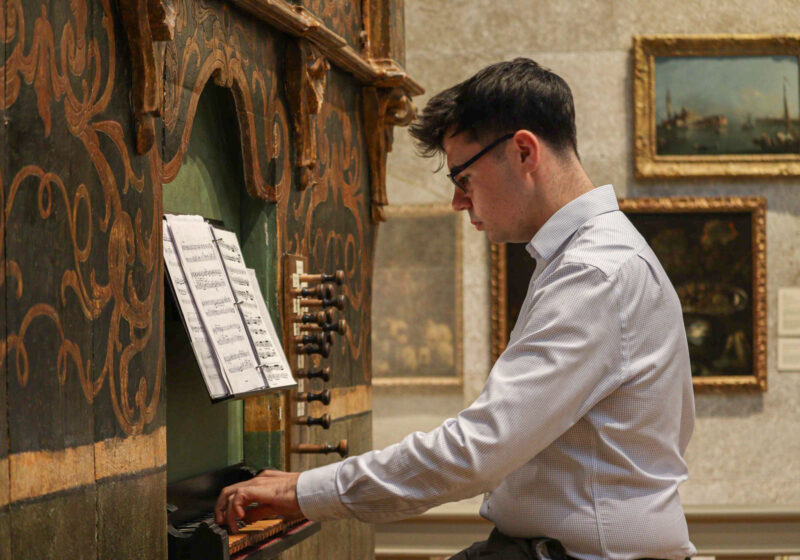Following a divisive debate in the Students’ Association Senate that led to a showdown between executive powers, the Government Restructuring Committee met on April 13. The committee finalized decisions, put the finishing touches on the new constitution that it has written and refined over the last several weeks and began collecting the approximately 1,200 signatures necessary for ratification.The GRC hoped to gather signatures following Monday night’s Senate meeting. That attempt was temporarily derailed after some senators voiced concerns about the method of selecting committee chairpersons and the addition of a vice president. The Senate is not required to endorse the proposed constitution.Senators and all students were encouraged to attend GRC’s meetings to add their input.”I’m a little annoyed,” Deputy Speaker of the Senate and GRC Chairperson Pete Nabozny said. “[The senators] had plenty of time to review the constitution. We have limited time to get this ratified. It is very important that we resolve these issues, but we also need to start collecting signatures.”After an extensive two-hour debate, it was clear that the GRC would need to make some changes to the document. The vote was tied with nine senators in favor of endorsing the constitution then, before seeing the final product, and nine opposed.Senior and Speaker of the Senate Alex Voetsch cast the tie-breaking vote. “Every year for the past three years there has been an attempt to revise the constitution or adopt a new one,” Voetsch said. “Each year those initiatives have come too late, preventing them from being approved.”I trust the [GRC] to take the Senate’s advice into account as they finalize this constitution. The Senate is not doing its job if we do not get moving. I vote yes to endorse the constitution.”Senior and SA President Chris Calo disagreed. “I don’t think that this is the best way to support change [without having seen the final document],” Calo said. “I am exercising my veto authority. It is not that I do not want this new constitution to be adopted, but I want to make sure that you see this constitution through to completion before supporting it.”This is the first veto of Calo’s administration and the first veto used in recent history. The proposed constitution clarifies the roles of the branches of government and provides the opportunity for more flexibility in shaping procedures. Senate approval of committee chairpersons and the addition of a vice president were the subjects of greatest debate.”Committee members should chose who they want to have lead them,” junior and Senator Jack Voorhees said. “Committees want someone who will lead them in the direction the committee wants. The committee could wind up with a leader who they don’t want.”In response to Voorhees’ caution, Nabozny said, “If the committee didn’t like the appointee I believe that the Senate would be sympathetic. However, if the other members of Senate like that nominee, then they get to set the agenda because that is how democracy works.”Calo echoed Nabozny’s sentiments. He asked, “If the committee is ‘right’ with their concern about a nominee, and they can’t convince the Senate of that, are they really ‘right’?”The language of the proposed constitution was altered so that the president will nominate committee chairpersons. Changing the terminology from “appoint” to “nominate” allows the president to suggest multiple people for the committee chair positions. Beyond this, the rules for selecting the actual chairperson will be defined in the bylaws.A similar course of events followed for the discussion about whether or not to have a vice president. Some committee members, including Calo, expressed concern that having the additional burden of selecting a running mate might disenfranchise potential candidates as they deal with the other stressors of campaigning. Others asserted that a vice president would encourage more people to become active in the government.”Efficiency and legitimacy, two goals of government are not necessarily mutually exclusive,” senior and Senator Steve D’Amico said. “Having a vice president assists in advocating ideas and it does not rule out the possibility for a Chief of Staff to assist with efficiency.”The bylaws will detail the specifics of how a vice president will be elected. “The constitution’s role is to provide a broad framework of how the government will work,” ACJC Chief Justice and co-author of the constitution Erica Contini said. “Once the constitution is in place, bylaws will be written. In the bylaws, specifics are laid out which will setup the means of government action.”If the constitution is approved, the 2004-2005 academic year will be one of transition. The new constitution will not be implemented until May 23, 2005 so the GRC has sufficient time to write the bylaws pertinent to the new government’s success.The proposed constitution is available online at http://www.sa.rochester.edu. Committee members are circulating petitions for students to sign supporting the constitution. The Senate will reconsider endorsement next Monday. If insufficient signatures are collected by the end of this semester, the signatures of enrolled students will still be valid next semester if the GRC needs to collect more.Keesing can be reached atjkeesing@campustimes.org.
baroque
Going for baroque
At the far end of the room lies the Eastman Italian Baroque Organ, the only full-sized Italian Baroque organ in the Western Hemisphere.
Australia
Pesto is sus
This guy is twice as large as any of his siblings and even larger than his parents. He is anything but a little guy. His stature is … actually a little bit suspicious.
LGBTQ
“Heartstopper” Season 3 is an ode to queerness and mental health
The hit queer coming-of-age show “Heartstopper” returns with its junior season — and this time it tackles heftier topics than before.





